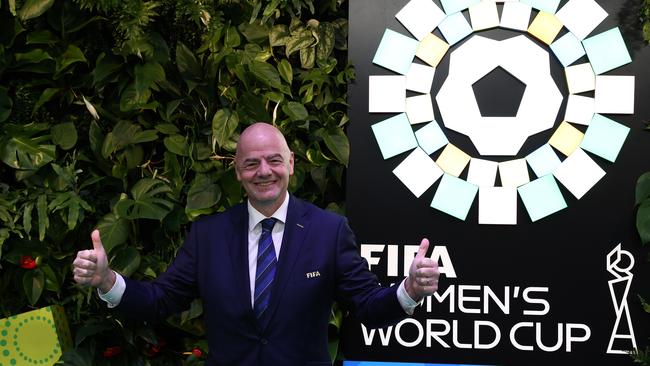Trans-gender footballers expected to compete in Women’s World Cup: FIFA
Changes to the rules on transgender players won’t be in place before September, and some teams will be able to field players who were born male.

Officials believe transgender footballers will compete at the FIFA Women’s World Cup in Australia and New Zealand this July and August as the sport grapples with gender identification rules.
FIFA is currently reviewing its policy surrounding transgender players which is based on men self-identifying as women, or vice versa, and also those classed as inter sex – where women have naturally occurring high levels of testosterone or were born with extra chromosomes.
But any change to the current rules won’t be in place before the Women’s World Cup, and some teams will be able to field players who were born male in their line ups.
FIFA heads the biggest single sport for women, and that lofty status means these decisions can’t be rushed’’, says the FIFA women’s program director Sarai Bareman, who said three transgender players had contacted her about the review process and that she believes there are others.
“It’s very topical,’’ she told The Australian.
“I think it’s very sensitive, and we need to be very careful about how we deal with it. That’s something we’re taking very, very seriously. And we certainly don’t want to rush it (the decision on new rules), given the impact that it will have for many generations to come.”
She added FIFA had been consulting various groups including human rights groups, non-government organisations, athletes and other sports as well as the International Olympic Committee.
“We have to be very careful as you know, we have 211 member associations and essentially what we do seem to blueprint for those member associations, which is why the consultation process is very extensive and we will take our time to ensure that we get it right,’’ she said.
FIFA currently allows trans players from competing in the gender they identify with, on a case-by-case basis.
The FIFA review on transgender athletes has been underway since June last year when the world swimming body FINA banned transgender females from participating in female competitions after puberty.
World Athletics, which previously had indicated it would also follow a similar strict line, appears to have backtracked with a new discussion paper allowing for trans athletes to compete if they take hormone medication and identify in their chosen gender for two years.
But the proposed new hormone levels in the athletics paper is for trans women to have 2.5 nanomoles per litre of testosterone, which is still much higher than typical female hormone levels which range from 0.42 to 1.96 nanomoles per litre.
The planned new rules also discount the obvious physical benefits of biological men who have gone through puberty having a much larger heart and lingering strength even after undergoing hormone suppression therapy.
The new athletics position is at odds with the statements made by World Athletics president and aspiring IOC presidential hope Seb Coe last year.
”We have always believed that biology trumps gender and we will continue to review our regulations in line with this. We will follow the science,’’ he had said.
“We can’t have a generation of young girls thinking there is not a future for them in the sport. So we have a responsibility … maintaining the primacy and the integrity of female competition is absolutely vital.”
Last year, the IOC said the eligibility of trans athletes was a decision for individual sports bodies, but controversially added: “until evidence determines otherwise, athletes should not be deemed to have an unfair or disproportionate competitive advantage due to their sex variations, physical appearance and/or transgender status”.







To join the conversation, please log in. Don't have an account? Register
Join the conversation, you are commenting as Logout